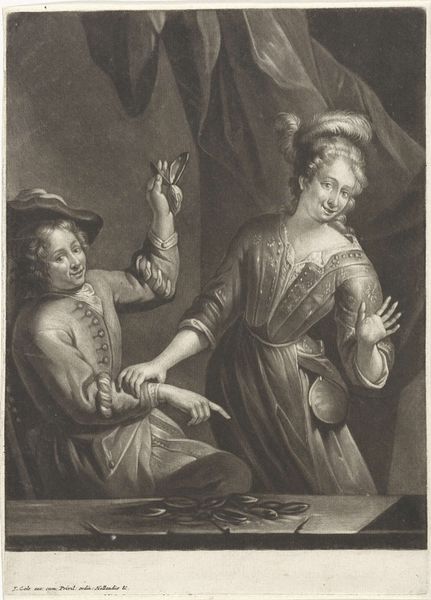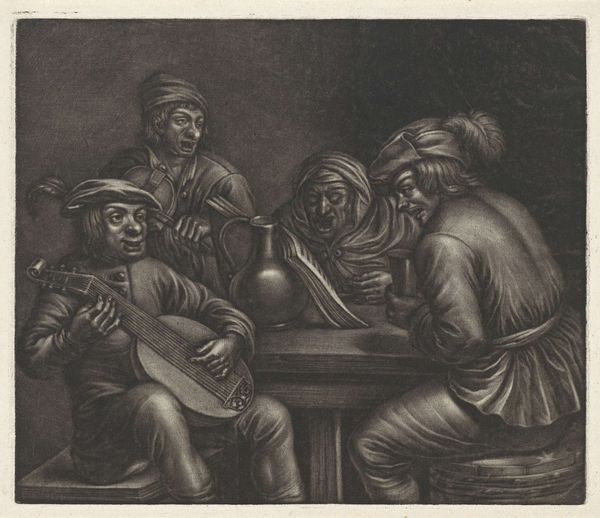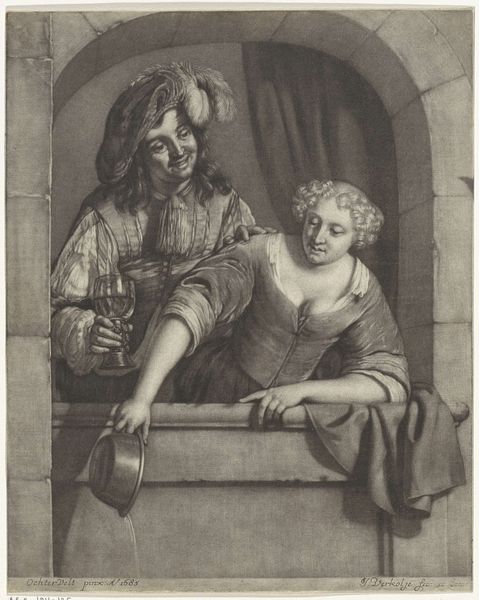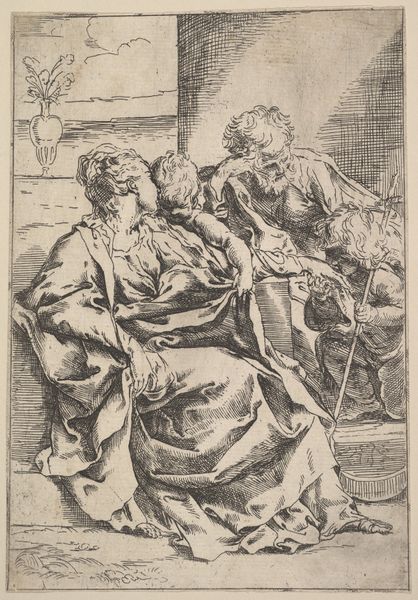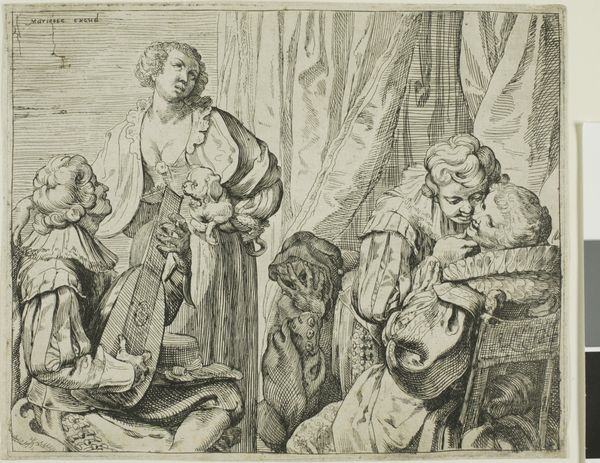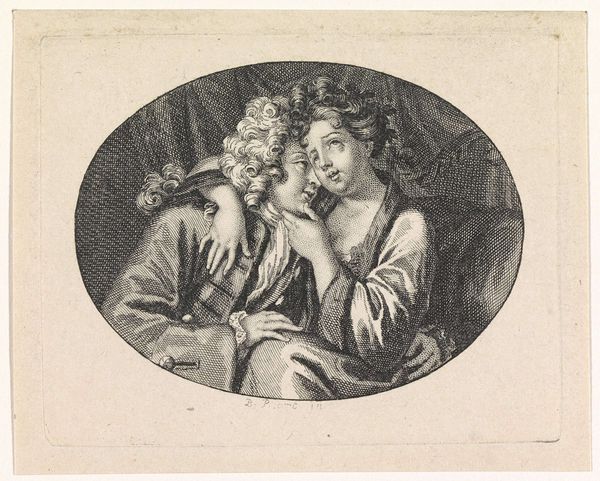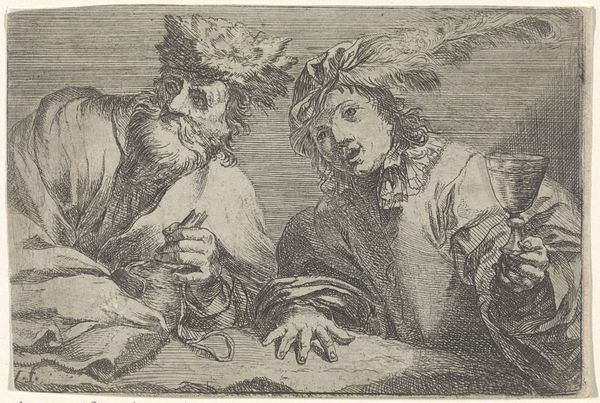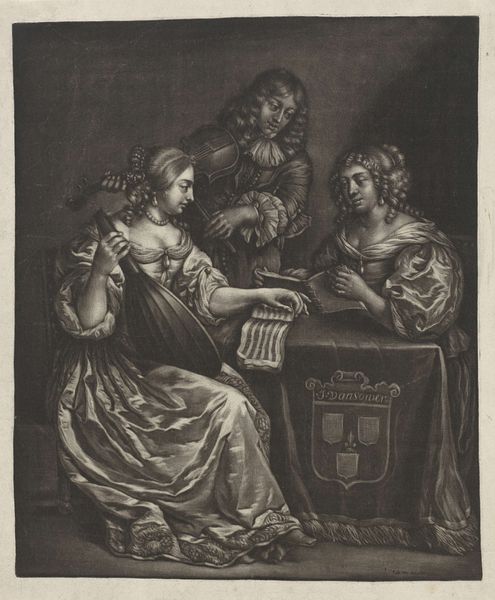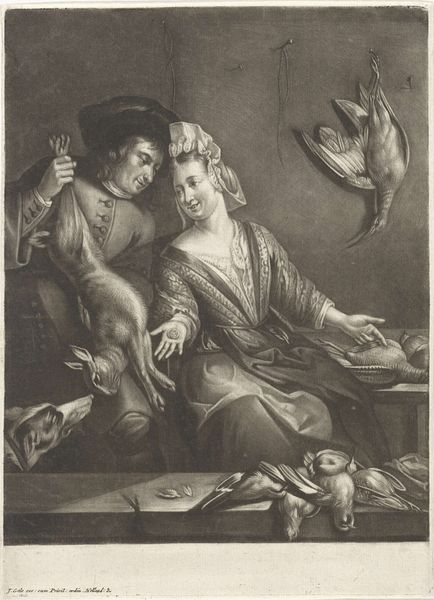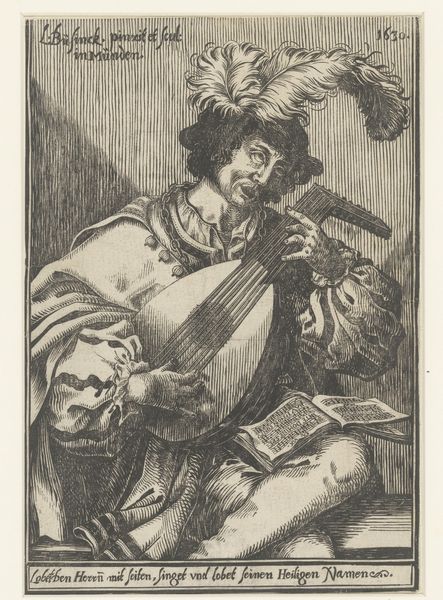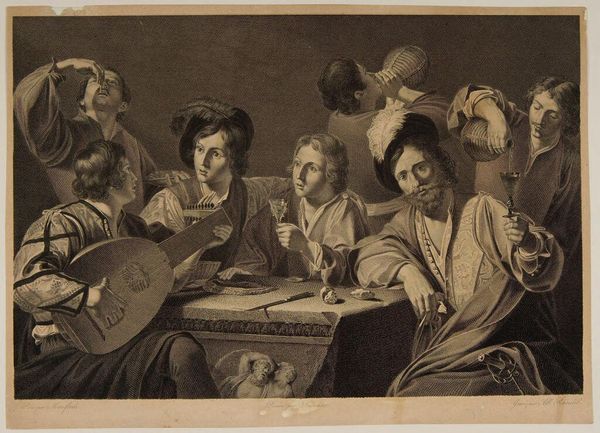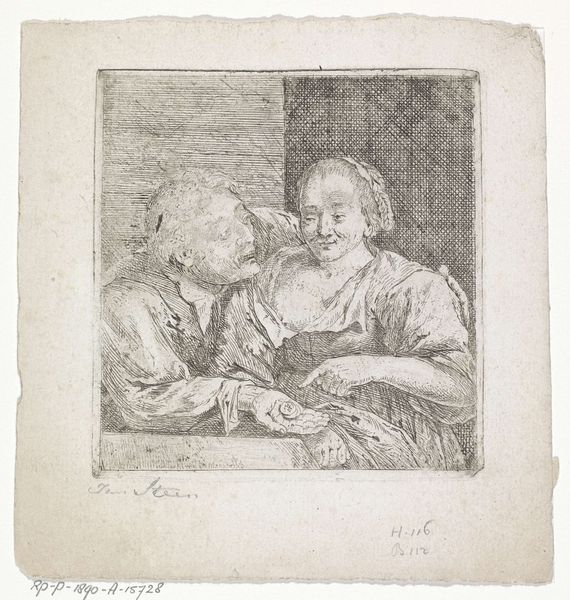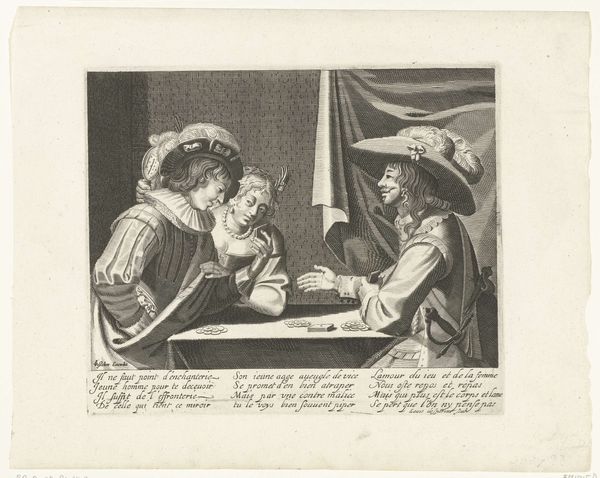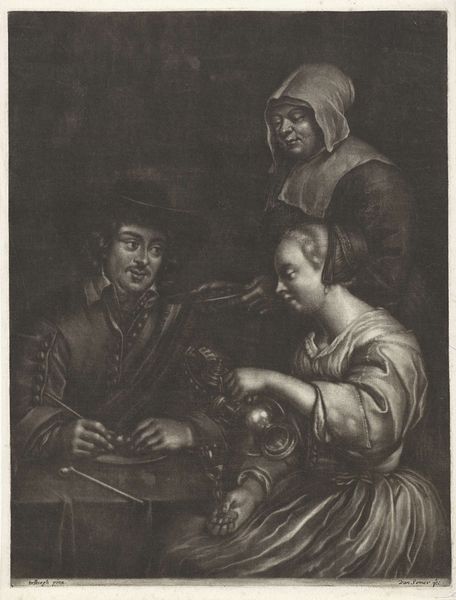
drawing, etching
#
portrait
#
drawing
#
baroque
#
portrait image
#
etching
#
charcoal drawing
#
figuration
#
form
#
line
#
portrait drawing
#
genre-painting
#
portrait art
Dimensions: height 597 mm, width 462 mm
Copyright: Rijks Museum: Open Domain
This engraving of two musicians was made by Johann Elias Ridinger in the 18th century. Look closely, and you'll notice the texture of the paper. Ridinger likely used a technique called mezzotint, which involves roughening the entire plate, then smoothing areas to create lighter tones. This labor-intensive process requires skill, as each tiny dot contributes to the image's overall depth and luminosity. The material quality of this engraving deeply influences its appearance. The velvety blacks and subtle gradations create a sense of richness, hinting at the opulence of the musical scene it depicts. The figures' garments are rendered in minute detail, suggesting expensive fabrics and elaborate tailoring. Engraving was a time-consuming craft, reflecting the values of precision and refinement in a pre-industrial age. By examining the making process, we can appreciate the artistic labor involved and how it connects to wider social contexts. This challenges the traditional separation of fine art from craft, emphasizing the significance of materials and making in understanding an artwork's full meaning.
Comments
No comments
Be the first to comment and join the conversation on the ultimate creative platform.
